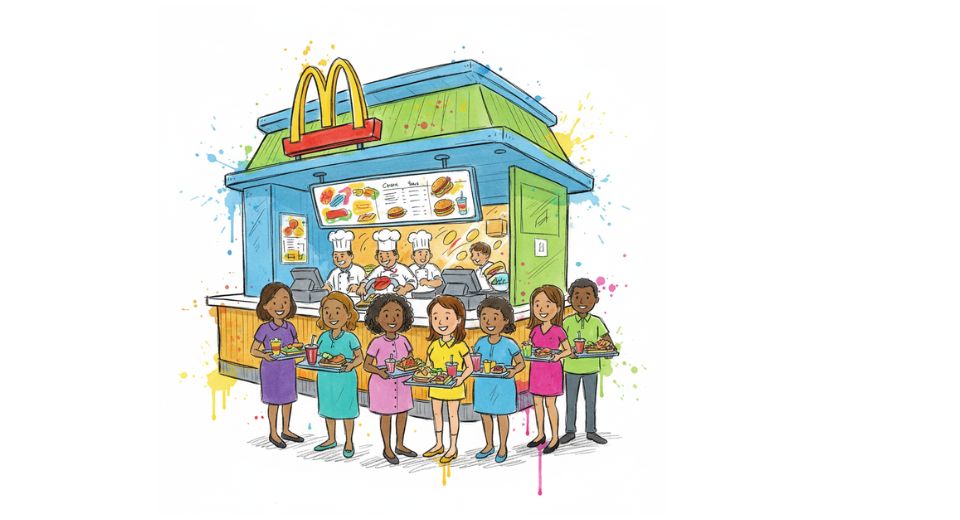
Sep 12, 2025

The recent market report on the global quick service restaurant (QSR) market report by Metastat Insight reveals an industry that has subtly rewritten contemporary patterns of consumption through flexibility, consistency, and volume. The sector reflects a clear capacity to reinvent commercial models without abandoning the founding values of accessibility and instantaneity. With its evolution, the worldwide quick service restaurant (QSR) industry has integrated itself into the urban and suburban community's daily life, fostering a special relationship between social customs and convenience. The growth of the global quick service restaurant (QSR) industry cannot be explained by one aspect but by the numerous contextual factors that intersect within the larger context of food and service.
Global Quick Service Restaurant (QSR) market is estimated to reach $1,057,797.35 million in 2025 with a CAGR of 9.0% from 2025 to 2032
Infrastructure expansion, changes in lifestyle, and the slow integration of eating outside the house all contribute subtle nuances to this trend. As opposed to traditional establishments, this category has established a persona based not just on speed but also on the guarantee of known results. That reliability created a type of trust, a connection that enables customers from all parts of the country to trust what they know without doubt. Such confirmation has put the industry outside the realm of simple sustenance. Quick service is now integrated into habits, tending to determine where socializing takes place or how calendars are managed. For many city centers, the site of these eateries has redesigned street patterns and real estate stakes.
The international quick service restaurant (QSR) industry therefore has an impact reaching outside immediate purchases, affecting transportation, jobs, and even public space design. As the shapes of consumer expectation shift, this sector has demonstrated a willingness to weave innovation into established structures. Packaging, digital interfaces, and menu design show how an initial foundation may be consistently updated without compromising its initial integrity. Rewards programs and electronic ordering options give one clear example of how new technology is wrapped up in an established story. Each innovation adds more engagement with consumers while adding efficiency to operation within a competitive marketplace.
Supply chain management in the international quick service restaurant (QSR) industry accentuates another dimension of its strategic acuity. The coordination necessary to maintain consistent standards in diverse geographies underscores a logistical excellence that generally escapes observation. Behind every counter sale lies an organization of producers, distributors, and surveillance systems working with seamless efficiency. The sophistication of these processes guarantees that the consumer experience is so seamless it seems automatic, though the underlying complexity is vast.
Cultural adaptation has also informed the profile of this market. Menus tend to incorporate local traditions while remaining consistent with brand, a balance that commands a subtle appreciation of local taste without sacrificing global recognition factor. This balance reveals how the sector handles the tension between global standardization and local significance, enabling the global quick service restaurant (QSR) market to penetrate markets that otherwise seem resistant to homogenization.
The economic impacts reach across varying levels. Job opportunities created by such outlets vary from beginning jobs to high-level managerial and strategic functions. Training frameworks created by top chains tend to be starting points for young employees into formal professional settings, opening up routes far beyond their first job. Additionally, the network sustains a whole series of ancillary industries such as agriculture, logistics, packaging, and technology solutions.
Environmental concerns increasingly influence the practices in this industry. Sustainable packaging, energy-saving kitchen operations, and updated sourcing policies reflect an awareness of wider social expectations. Although growth here is uneven, the fact that the discussion is taking place indicates that the global QSR market is not indifferent to present concerns. Such sensitivity makes it both an enhanced service provider and social contributor.
Another characteristic hallmark is the sheer diversity of models within the mantle of quick service. From internationally well-known brands to local entrants hoping to establish niche position, the scope of activity indicates a dynamic framework.
Competitive responses are not merely derived from pricing and menu engineering but also from experience facets like store appearance and customer engagement. This diversity makes the global quick service restaurant (QSR) market richer and avails it from settling into a rigid pattern. The power of this industry also originates in the capacity to insinuate itself into everyday existence without requiring explicit effort from the consumer. Accessibility and standardization work in tandem to build an almost-invisible support system of convenience. To a great extent, the industry works as a quiet companion to contemporary habits, providing a pre-made solution in a moment of time stress or social imperative.
The Metastat Insight report on the worldwide quick service restaurant (QSR) market eventually highlights the way in which such an everyday activity as ordering a meal involves layers of economic, cultural, and logistical meaning. It uncovers the way in which an industry that one tends to take for granted is able to merge global systems with local subtlety, operational rigor with cultural awareness, and commercial ambition with social conversation. The story of this market is one of ongoing interaction between stability and adjustment, generating an impact far more profound than its exterior may indicate.
Drop us an email at:
Call us on:
+1 214 613 5758
+91 73850 57479